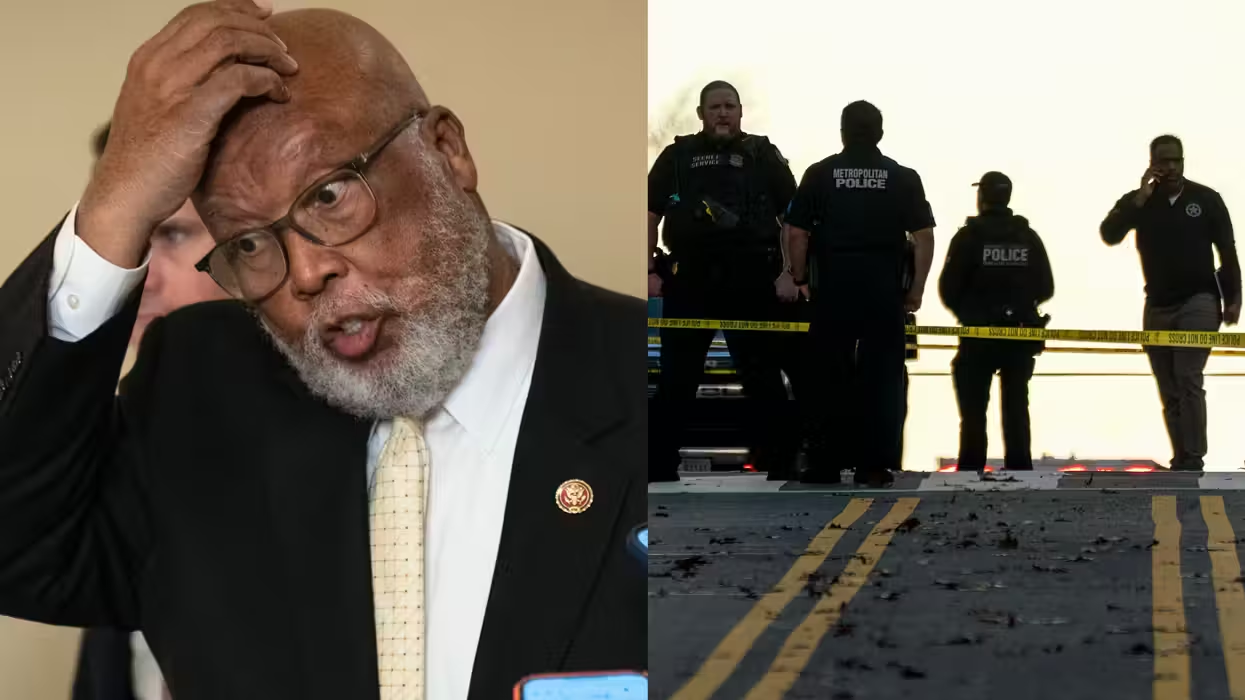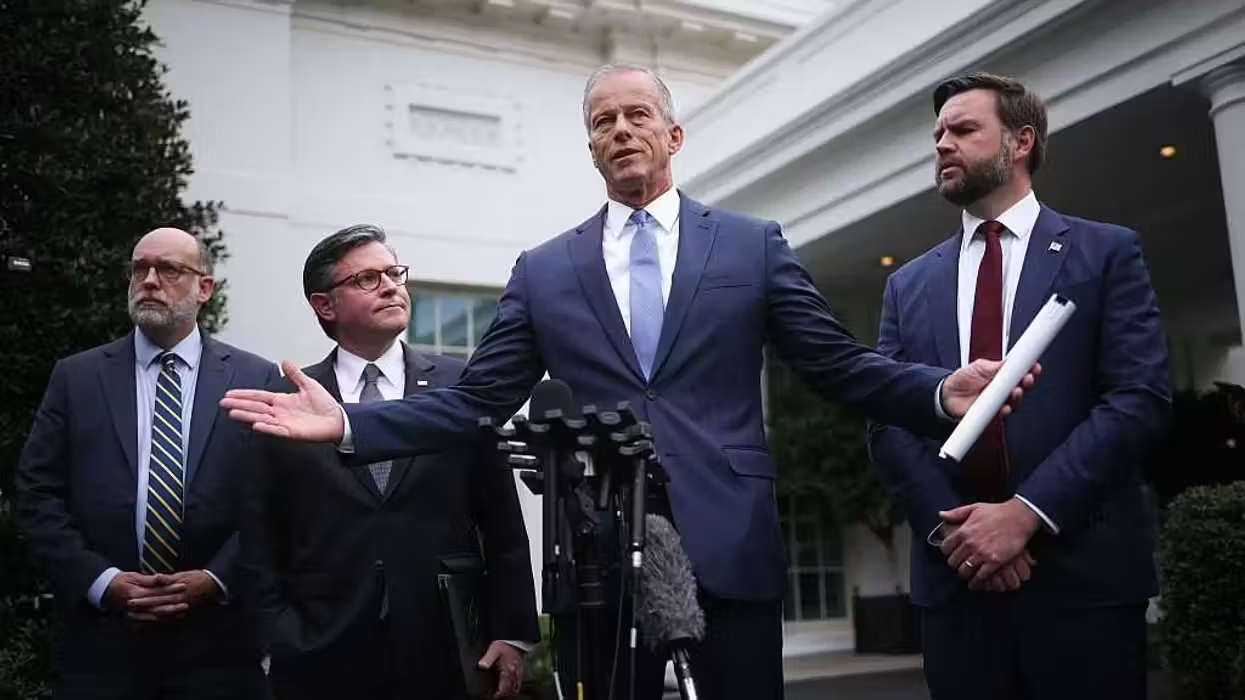
© 2025 Blaze Media LLC. All rights reserved.
We know there's been a lot of talk lately about the "fiscal cliff." We also know it can get a little wonky. So we decided to help put together a pictorial that helps explain what exactly is going on. Enjoy:
First, the cliff...
 https://kthanksbaibai.blogspot.com/
https://kthanksbaibai.blogspot.com/
So essentially we owe this much money
OK, more like this much
 H. Armstrong Roberts/ H. Armstrong Roberts/ClassicStock/Corbis
H. Armstrong Roberts/ H. Armstrong Roberts/ClassicStock/Corbis
And we have to pay it back somehow
Half of Washington wanted to pay the money back by taking "rich" people's money
The other half wanted the government to spend less and pay the money back that way
So everyone agreed these smart guys should set up a panel and come up with a budget deal
Guess what?
It did not work.
As an 'incentive' to get things done, the Budget Control Act of 2011 threatened harsh repercussions if the panel failed
You know, to force them to come up with a budget plan
But no one did anything
So the punishments are about to take place now
Those punishments along with expiring Bush-era tax cuts are referred to as the "fiscal cliff"
 https://craigmotor.wordpress.com
https://craigmotor.wordpress.com
First, everyone's taxes go up!
That's a $500 billion increase in taxes
And these guys are going to have to spend $200 billion less!
The sudden halt to spending & massive tax increases might mean another recession
 Margaret Bourke-White—Time Life Pictures/Getty Images
Margaret Bourke-White—Time Life Pictures/Getty Images
No one in Washington really wants this
So there are four ways to deal with this problem:
1. Just go over the cliff
According to the Washington Post:
"The simplest option for Congress and the White House would be to do nothing. Taxes would go up. The military and domestic spending cuts in the sequester would bite down. This would be the single largest act of debt reduction in American history, cutting some $1.2 trillion from the deficit over the next two years. Trouble is, that much austerity would likely also induce a recession. That’s why few policymakers advocate this scenario.There’s another problem with this plan: Lawmakers can’t just sit back and do absolutely nothing. Even if the tax hikes and spending cuts kick in, Congress would still need to vote to lift the $16.4 trillion debt ceiling by February or so. Otherwise, the United States government would no longer be able borrow money to fund its obligations. That could be trouble."
2. Just go over and try to fix things on the other side
According to the Washington Post:
"Another possibility is that lawmakers don’t reach a deal by Dec. 31. The United States goes over the fiscal cliff. But it’s only temporary. After all, those tax hikes and spending cuts don’t kick in with full force immediately. They’re spread out over two years. So there’s still time to make a deal when the new Congress convenes in January.Why would lawmakers do this? It might make a deal easier. Right now, the two parties are having a tough time reaching an agreement because Democrats want higher taxes on the wealthy and Republicans mostly refuse to vote for any tax increases at all. But if we go over the cliff, taxes automatically go much, much higher than either party wants. Now the two parties simply need to debate how to cut taxes from this new baseline. That’s a happier discussion, in theory.
The downside is that Congress and the White House might not have much time to negotiate a deal in January or February before financial markets start nosediving."
3. Push the cliff down the road
According to the Washington Post:
"There’s nothing stopping Congress and the White House from postponing the fiscal cliff until 2013 or 2014. Congress would simply vote to extend all (or some) of the Bush tax cuts and payroll tax cuts. Then Congress votes to override the sequester, so that none of the military and domestic spending cuts kick in. Suddenly, the fiscal cliff is gone–or at least pushed back.The upside here is that there’s no recession. The economy gets time to mend. The flip side is that deficit would continue to grow–the CBO estimates U.S. debt would be $1.2 trillion higher over the next two years if Congress extends everything, compared with if we went over the cliff. Plus, we’d face another big showdown two years from now."
4. The grand bargain
According to the Washington Post:
"At the moment, there’s a lot of talk in Washington about a “grand bargain” between Republicans and Democrats. This would involve avoiding sharp austerity in 2013. It would also involve some mix of spending cuts and tax increases that are gradually phased in over the next decade, so as to slowly bring down the U.S. national debt. It would also include substantial changes to entitlement programs like Social Security, Medicare and Medicaid. Examples of a “grand bargain” framework include the Simpson-Bowles plan, or the Domenici-Rivlin plan."
Either way we are pretty much here
And most Americans should feel like this
 https://therecoveringpolitician.com
https://therecoveringpolitician.com
Follow Benny Johnson on Twitter!
Want to leave a tip?
We answer to you. Help keep our content free of advertisers and big tech censorship by leaving a tip today.
Want to join the conversation?
Already a subscriber?
more stories
Sign up for the Blaze newsletter
By signing up, you agree to our Privacy Policy and Terms of Use, and agree to receive content that may sometimes include advertisements. You may opt out at any time.
Related Content
© 2025 Blaze Media LLC. All rights reserved.
Get the stories that matter most delivered directly to your inbox.
By signing up, you agree to our Privacy Policy and Terms of Use, and agree to receive content that may sometimes include advertisements. You may opt out at any time.






